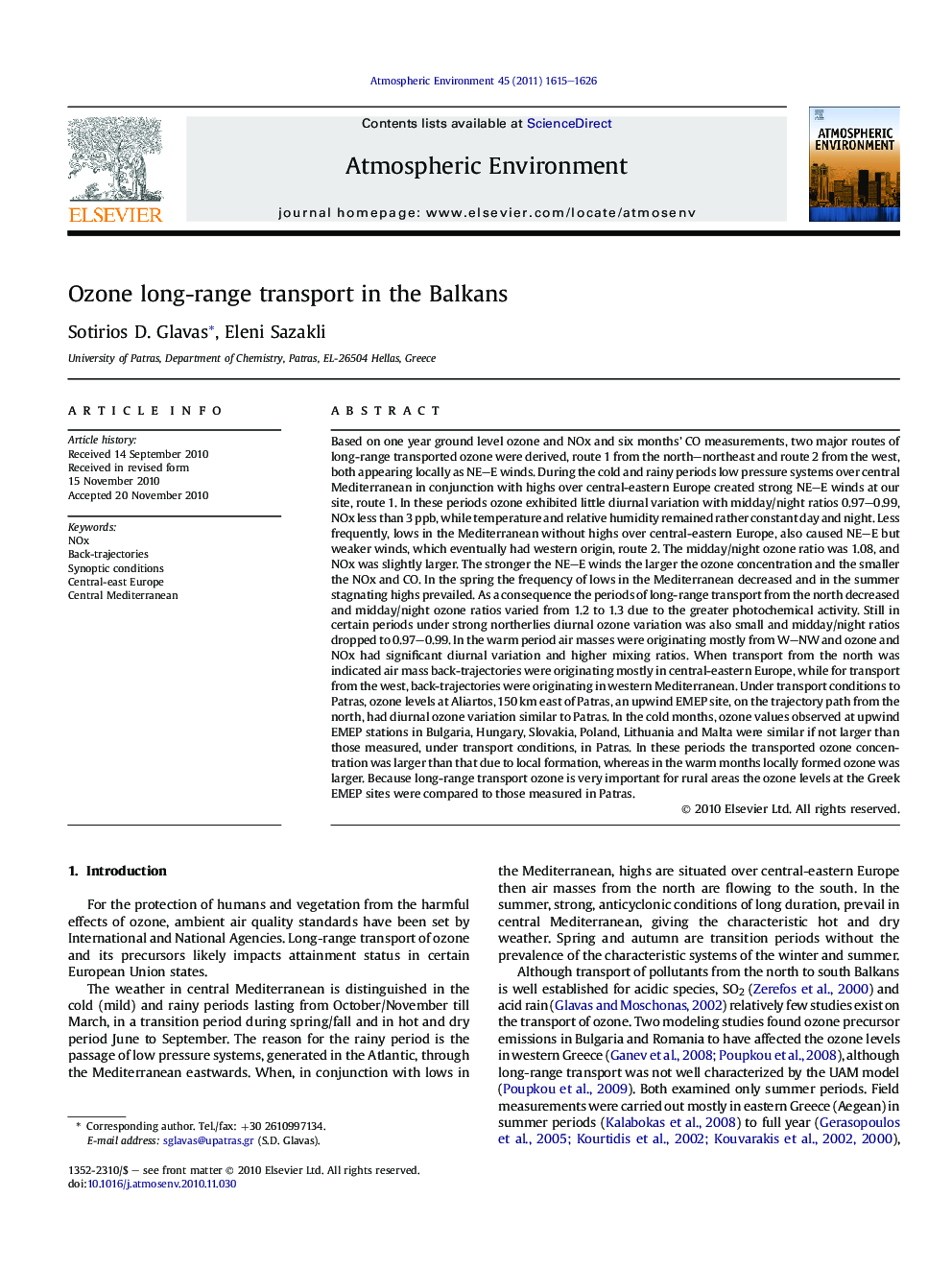| Article ID | Journal | Published Year | Pages | File Type |
|---|---|---|---|---|
| 4440061 | Atmospheric Environment | 2011 | 12 Pages |
Based on one year ground level ozone and NOx and six months' CO measurements, two major routes of long-range transported ozone were derived, route 1 from the north–northeast and route 2 from the west, both appearing locally as NE–E winds. During the cold and rainy periods low pressure systems over central Mediterranean in conjunction with highs over central-eastern Europe created strong NE–E winds at our site, route 1. In these periods ozone exhibited little diurnal variation with midday/night ratios 0.97–0.99, NOx less than 3 ppb, while temperature and relative humidity remained rather constant day and night. Less frequently, lows in the Mediterranean without highs over central-eastern Europe, also caused NE–E but weaker winds, which eventually had western origin, route 2. The midday/night ozone ratio was 1.08, and NOx was slightly larger. The stronger the NE–E winds the larger the ozone concentration and the smaller the NOx and CO. In the spring the frequency of lows in the Mediterranean decreased and in the summer stagnating highs prevailed. As a consequence the periods of long-range transport from the north decreased and midday/night ozone ratios varied from 1.2 to 1.3 due to the greater photochemical activity. Still in certain periods under strong northerlies diurnal ozone variation was also small and midday/night ratios dropped to 0.97–0.99. In the warm period air masses were originating mostly from W–NW and ozone and NOx had significant diurnal variation and higher mixing ratios. When transport from the north was indicated air mass back-trajectories were originating mostly in central-eastern Europe, while for transport from the west, back-trajectories were originating in western Mediterranean. Under transport conditions to Patras, ozone levels at Aliartos, 150 km east of Patras, an upwind EMEP site, on the trajectory path from the north, had diurnal ozone variation similar to Patras. In the cold months, ozone values observed at upwind EMEP stations in Bulgaria, Hungary, Slovakia, Poland, Lithuania and Malta were similar if not larger than those measured, under transport conditions, in Patras. In these periods the transported ozone concentration was larger than that due to local formation, whereas in the warm months locally formed ozone was larger. Because long-range transport ozone is very important for rural areas the ozone levels at the Greek EMEP sites were compared to those measured in Patras.
Research highlights► Ground level ozone measurements are used to determine periods of long-range ozone transport. ► Air mass back-trajectories indicate transport routes from central-east Europe and western Mediterranean. ► In winter, under transport conditions, ozone levels at upwind EMEP sites are equal or higher than in Patras. ► In winter, transported ozone concentrations are higher than those due to local conditions.
